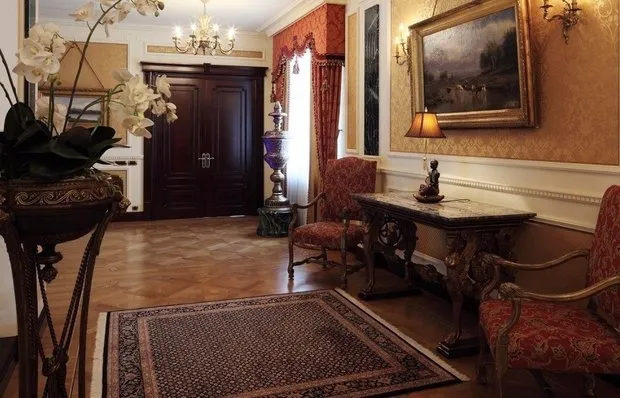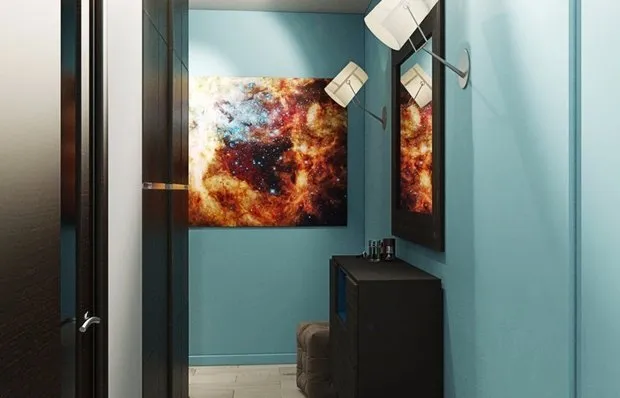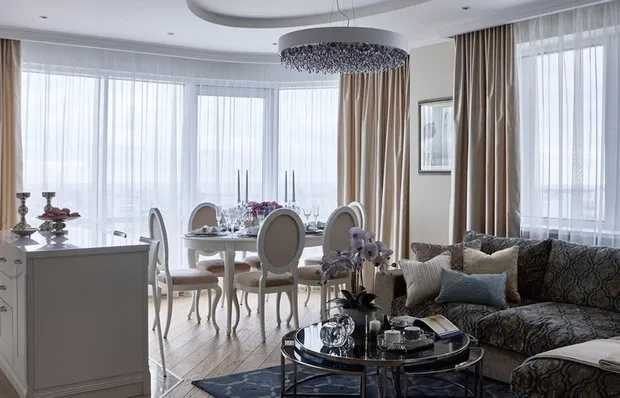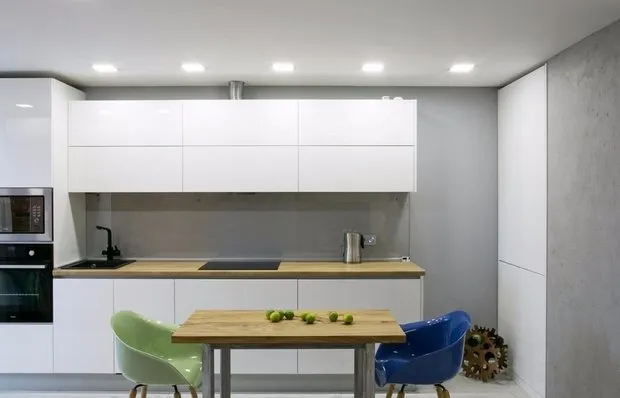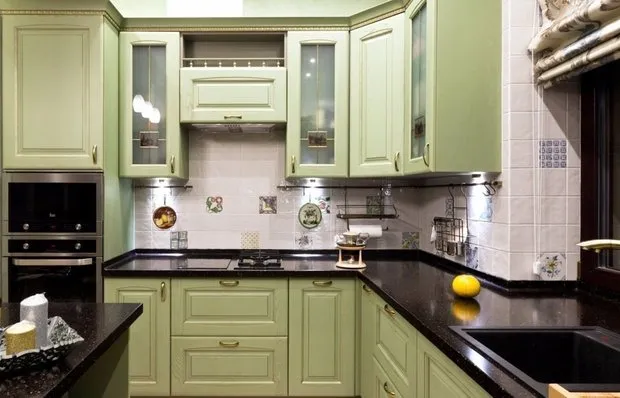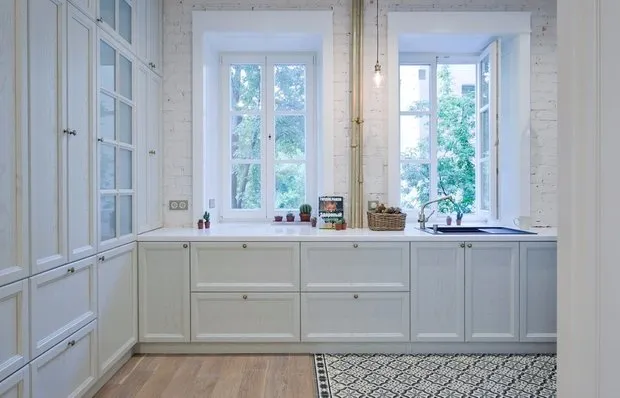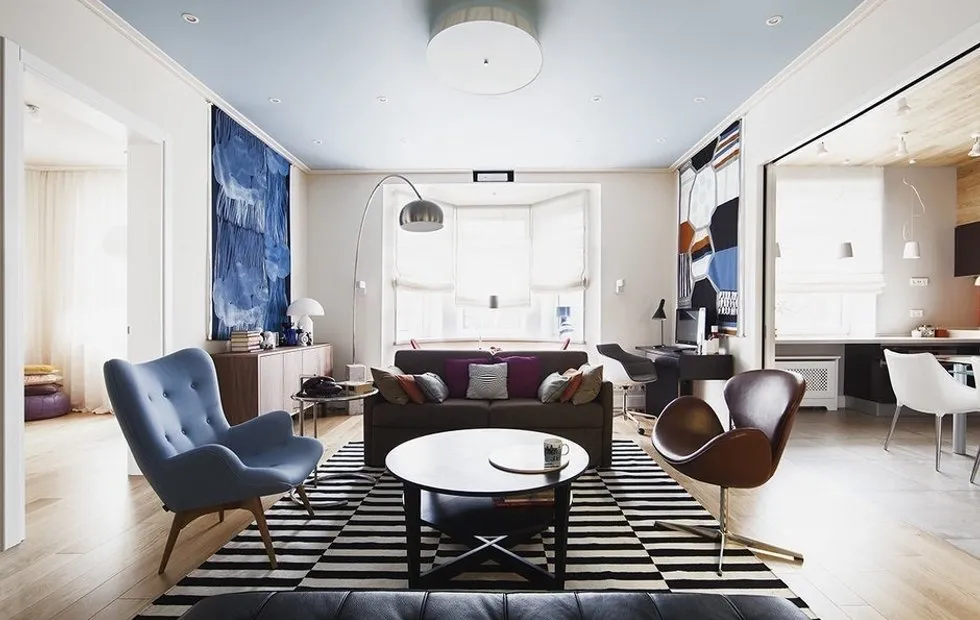There can be your advertisement
300x150
Ceiling Design for Kitchen with Photos
Decorating a kitchen ceiling has its own specifics. And first of all, this is related to the not-so-simple operating conditions: increased humidity, temperature fluctuations, possible fire hazard.
All of this negatively affects not only the visible part of the ceiling, but also its base. In addition, you need to consider the features of the interior to ensure that the kitchen ceiling design matches the chosen style of the room. How to combine all this and what to use for finishing?
Painting the Surface
The simplest option: applying a composition to the surface can be done by yourself. But first, you need to prepare the kitchen ceiling: fill in holes and cracks, remove bumps, remove soot stains, and completely level the surface. Here, help from a specialist may be needed if you lack experience. For painting, it is better to use water-emulsion matte compositions, which are applied with a brush or roller, forming a thin layer. Advantages of using paint:
- low material cost:
- possibility of doing the work yourself even with minimal experience;
- good resistance of the painted kitchen ceiling to high temperatures.
It should also be noted that there are some drawbacks to using paint for kitchen ceiling decoration. These include:
- short lifespan of the coating;
- poor resistance to excessive moisture exposure (if water is poured on top);
- need for regular surface renewal by repainting;
- impossibility of using recessed light fixtures.
 Design: Enjoy Home Studio
Design: Enjoy Home StudioUsing Wallpaper
This method of finishing is popular in rooms with low ceilings. For the kitchen, washable wallpapers are best. This material withstands moisture well and can be cleaned multiple times. Also, good results are achieved using wallpaper designed for painting. They have high density, which allows small defects on the base to be covered. The advantages of this installation include:
- low material cost;
- ability to do the work yourself;
- possibility of washing.
But there are many drawbacks, and the main one is the relatively short lifespan of the coating. In addition:
- the wallpaper application process is quite labor-intensive if compared to painting;
- when vapors and fats get into the seams, the material begins to peel off;
- if too much moisture gets in (a flood from above), the wallpaper will have to be replaced;
- the material does not have fire resistance, which is very relevant for the kitchen.
If you decide to wallpaper the kitchen ceiling, perform preliminary preparation. The surface must be leveled and treated with an antiseptic. Use adhesive with antibacterial properties.
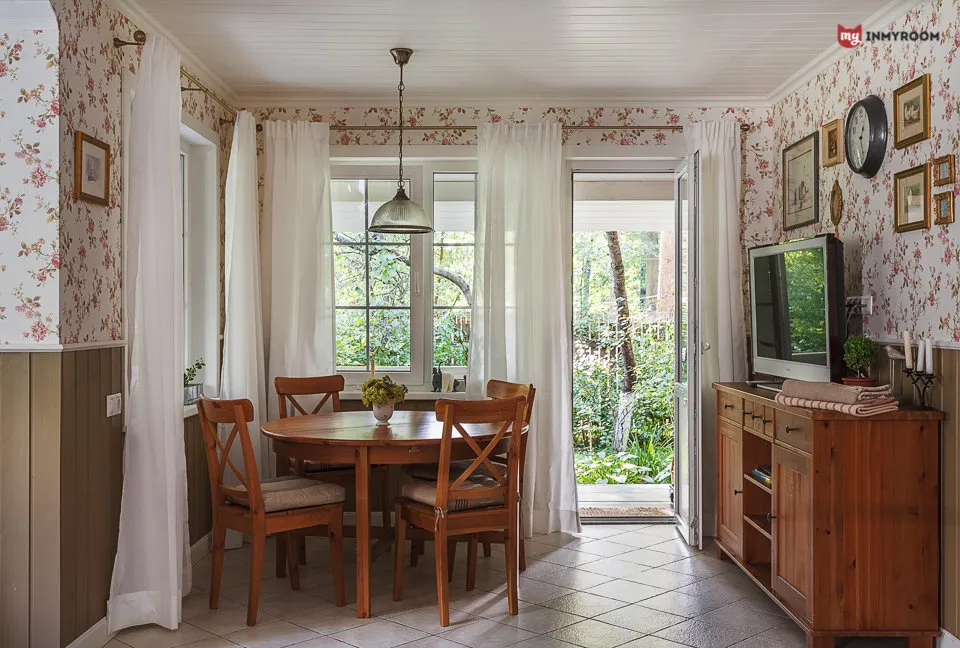 Design: Housewife Anna
Design: Housewife AnnaUsing Gypsum Board
A fairly popular method of kitchen ceiling finishing. When performing installation work, special moisture-resistant boards marked as GKLV (green in color) should be used. Metal profiles are also needed to level the base and allow laying electrical wiring for installing recessed light fixtures and/or chandelier, as well as in some cases ventilation systems. At the final stage, thorough spackling of joints is performed followed by painting. As a result, you get a perfectly smooth surface that skillfully masks any defects in the base. The negative aspects of this material include:
- relatively high cost of GKLV;
- labor-intensive installation requiring the presence of a helper and possessing special skills;
- low fire resistance.
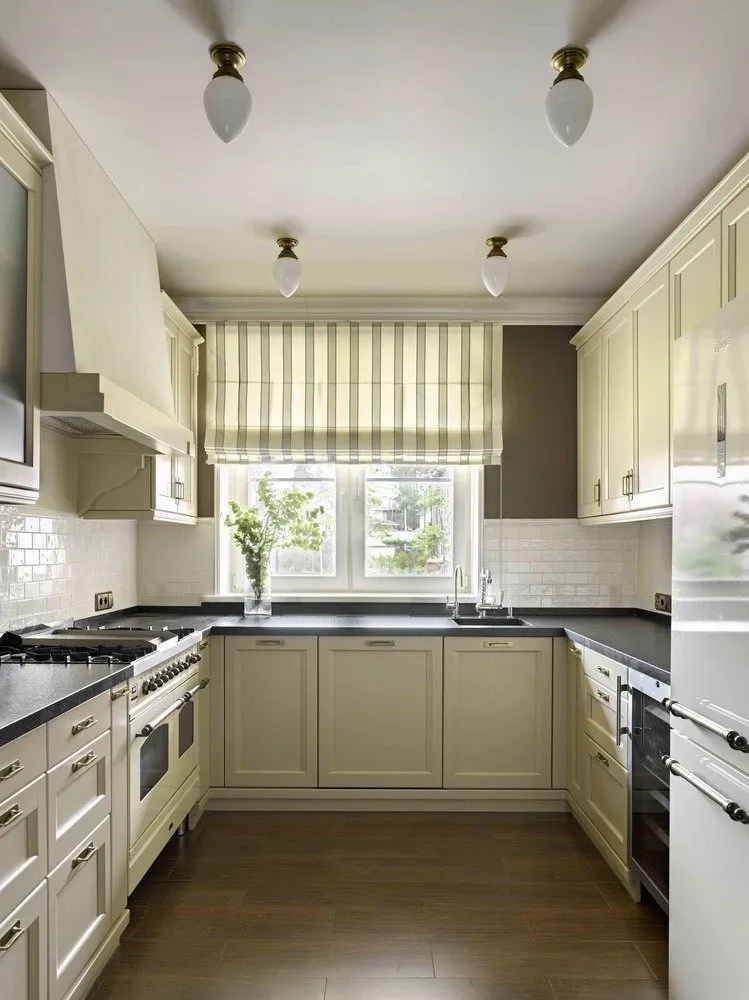 Design: Elena Chabrova and Olga Chebysheva
Design: Elena Chabrova and Olga ChebyshevaMulti-Level Gypsum Board Ceilings
The feature of this material is that it allows constructing ceilings with two or more levels. It's hard to do without professional help here: special methods of securing profiles and then gypsum board sheets are required. These sheets can have a semi-circular shape, which requires corresponding experience to achieve. However, the result is a beautiful and stylish kitchen ceiling that can serve as a zone divider, which is relevant for studios or where the living room is combined with the kitchen.
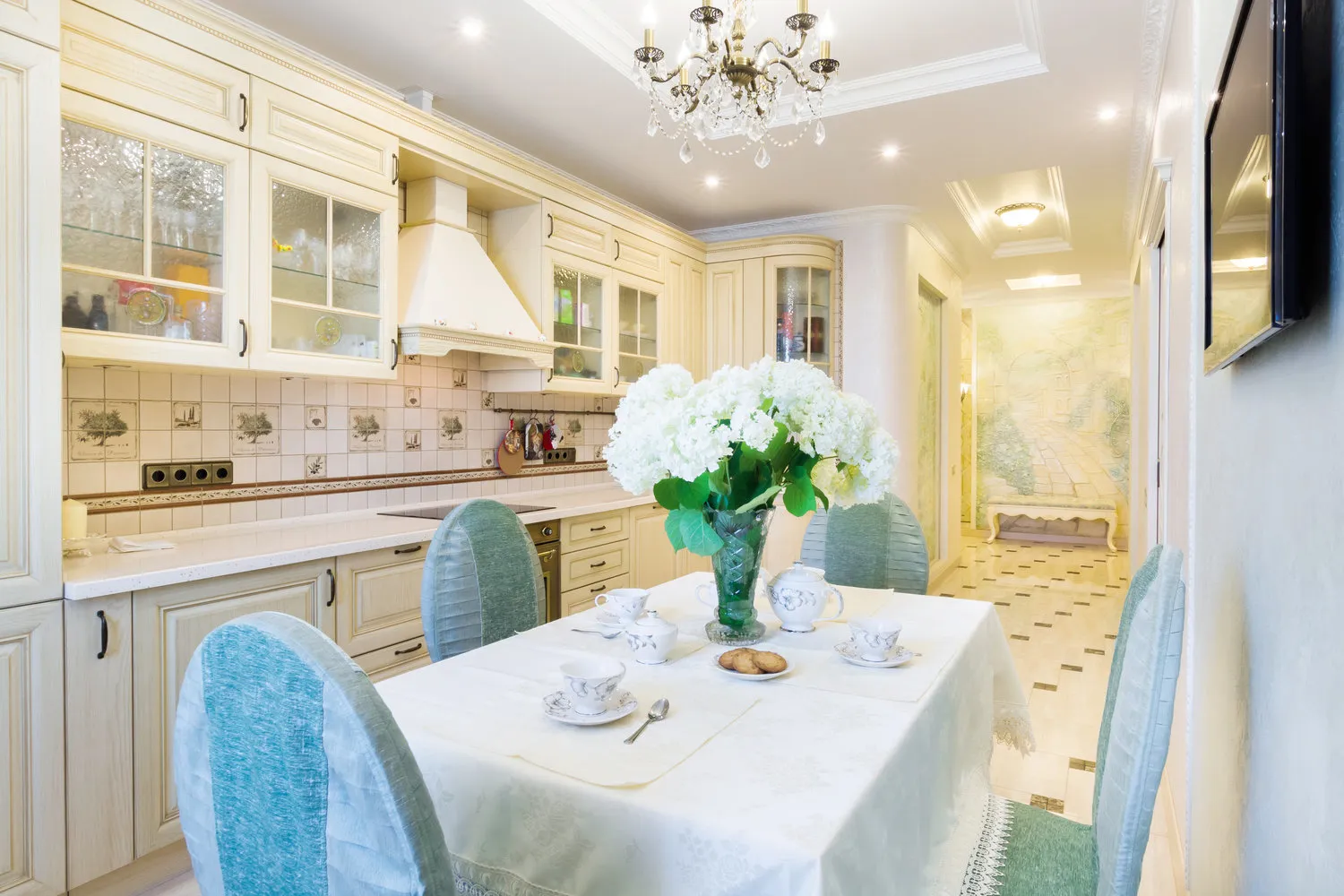
Stretch Ceilings
Also widely used constructions. They are distinguished by a wide variety of colors and aesthetically pleasing appearance, thanks to the perfectly smooth glossy or matte surface. Another positive feature of stretch ceilings is their ability to harmonize with any interior design. There are two types of stretch ceilings: fabric and PVC. For the kitchen, the second option is preferable: such a sheet can be easily wiped clean. In case of flooding from above, the plastic coating can hold a large amount of water, which can be drained gradually by making small holes in the right places. Another advantage is the possibility of installing recessed light fixtures and masking electrical wiring. What are the disadvantages of this type of coating? There aren't many:
- fear of sharp objects that can puncture the film;
- labor-intensive installation requiring professional skills and special equipment (thermal gun);
- reduction in ceiling height due to the use of mounting elements.
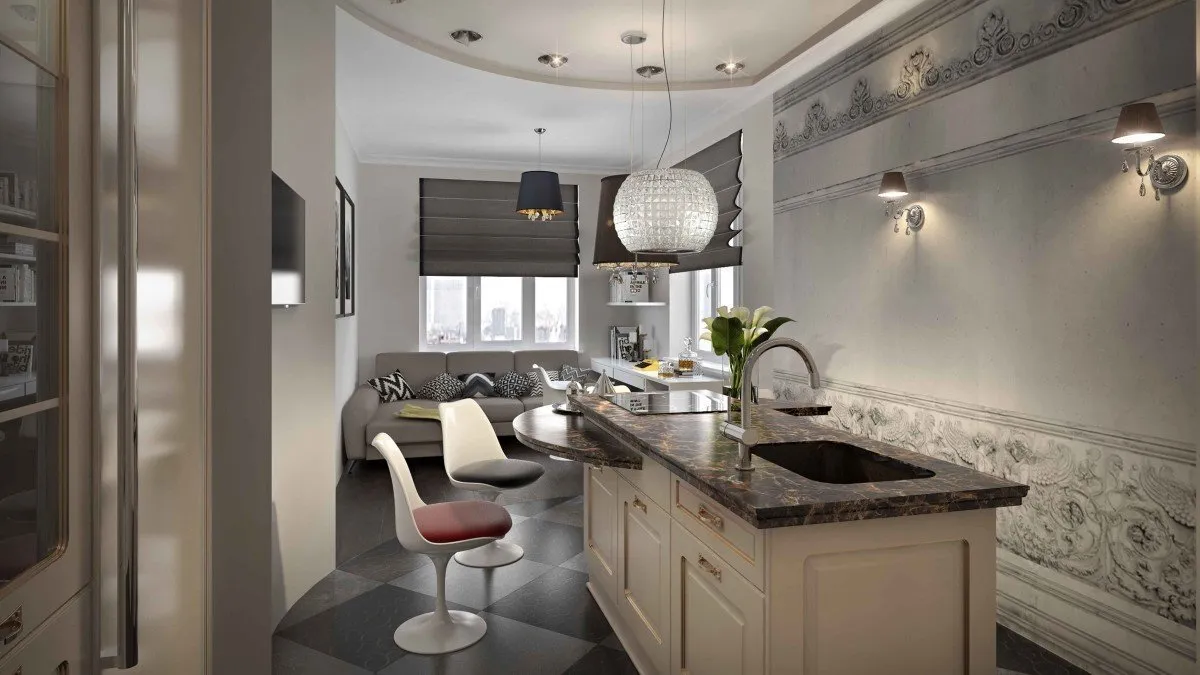
Exposed Kitchen Ceilings
These constructions differ from suspended ones in that they are attached directly to the slab without using metal hangers, i.e., there is almost no space above the ceiling. For constructing this type of ceiling, the following materials are usually used:
- boarding;
- plywood;
- particleboard or fiberboard;
- plastic;
- aluminum, copper or galvanized panels.
This type of construction is durable, easily withstands temperature fluctuations and high humidity (if using boarding, it should be pre-treated with antiseptic and fire-resistant compositions, then coated with varnish).

Exposed Wooden Ceilings
The main feature of this material is ecological safety and the ability to 'breathe'. The surface can be decorated with carving. In addition, wooden ceilings perfectly match the style of country. In this case, dark wood is preferred: sometimes an artificial aging effect is used. Also, a dignified look is achieved with a wooden ceiling in a classic style or 'Provence'. One of the advantages of such a coating is relatively easy installation, since there's no need to prepare the surface.
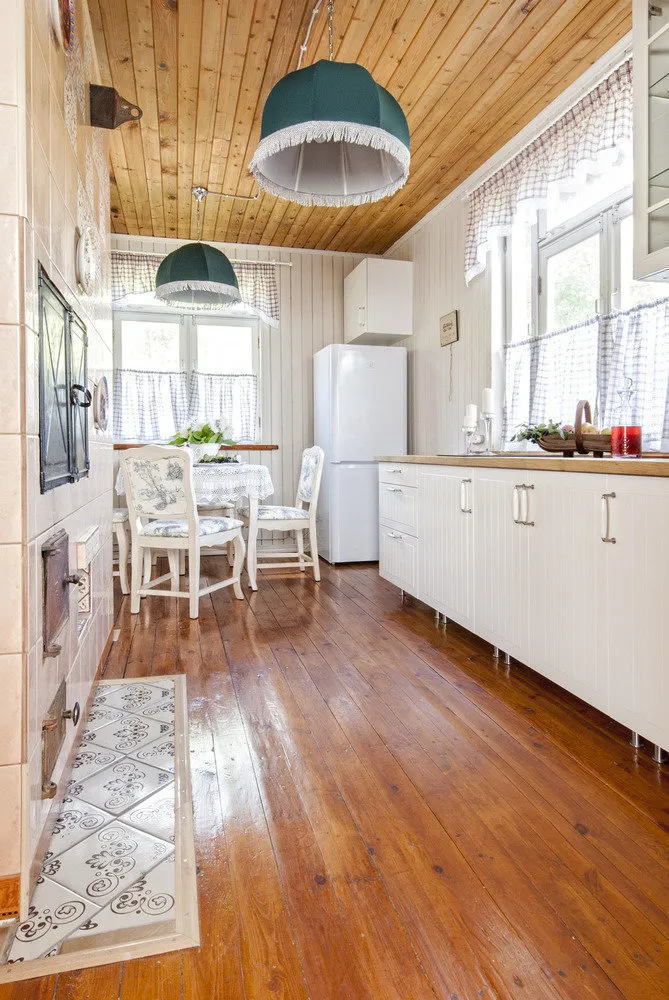 Design: Maria Nasedkina;
Architect Ilya Nasonov
Design: Maria Nasedkina;
Architect Ilya NasonovStrip Ceilings
This is one of the variants of suspended construction. The system includes a frame made of metal profiles and strips attached to it, made from plastic (rare variant), steel or aluminum. There are two variants of such a ceiling: open (with gaps between slats) or closed (solid, without gaps). For the kitchen, the latter method of installation is preferable. Advantages of strip ceilings:
- hygiene: the material from which the strips are made does not promote microbial growth;
- ease of maintenance: steel and aluminum do not absorb dirt, so cleaning the strip ceiling is not difficult;
- suspended installation allows hiding electrical wiring and some ventilation system elements;
- installation of the system is quite simple: it can be done with your own efforts;
- using material with a polymer coating offers a wide choice of color palettes.
What are the disadvantages of strip ceilings? First, this concerns damage to the zinc coating (for steel slats) or polymer coating. If this happens, corrosion is inevitable. The second negative point is the reduction in room height by 100-150 mm, i.e., this method of installation is not suitable for kitchens with low ceilings. And lastly: not every interior will suit a striped surface.
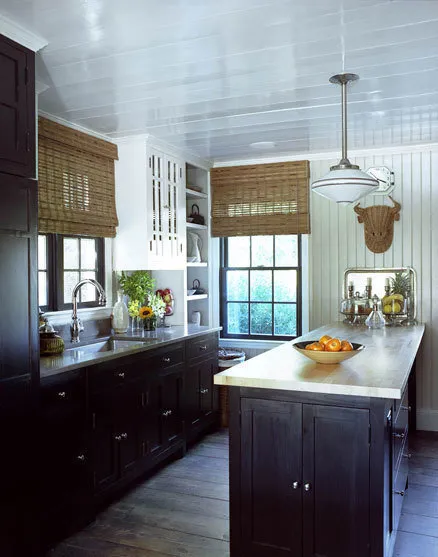 Design: Jean-Louis Dénio
Design: Jean-Louis DénioKitchen Ceiling from Plastic Panels
Choosing to install such a surface is not only economical: manufacturers offer plastic strips in various shades, textures and sizes. You can always find a variant that most accurately matches the interior design. And this is far from all the advantages. Among the pros, one can also list:
- affordable cost;
- perfectly smooth surface after installation is complete;
- possibility of using wooden or metal frames;
- simplicity of installation;
- ease of maintenance: any cleaning agents can be used.
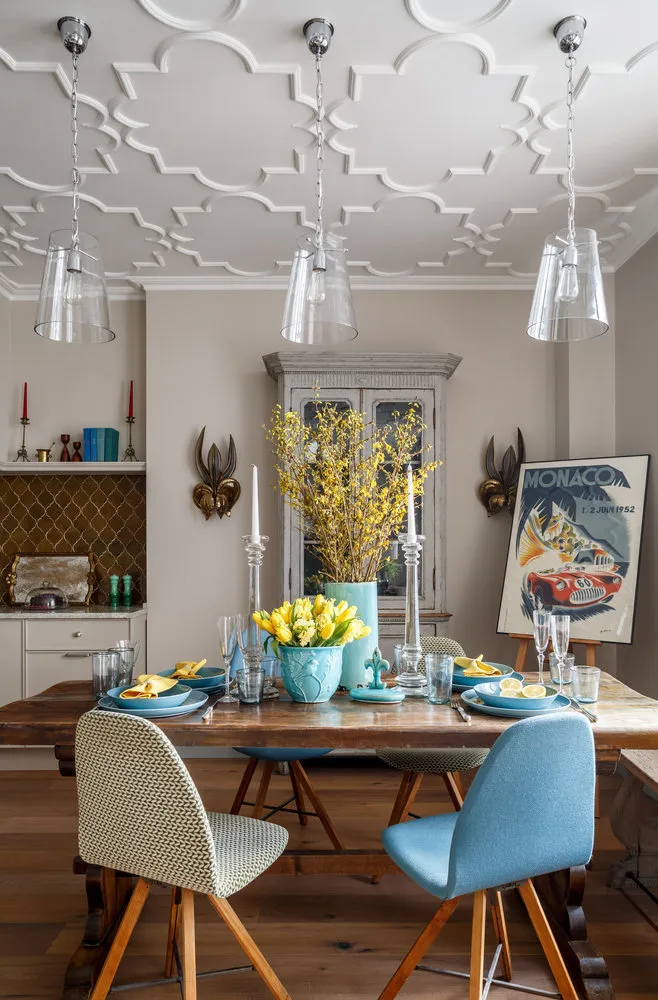
Ceiling Tiles
This refers to using a material such as polystyrene foam. Made from these tiles, they belong to the budget option for finishing. Such finishing is cheap, easy to install using adhesive, and also effectively hides even serious surface defects. Among the negative qualities, one can note the limitation in terms of design (styles 'classic' or 'retro') and poor resistance to dirt.

Combined Kitchen Ceiling Design
This is most often a combination of stretch and suspended structures. The multi-level variant is also possible. For example, in the center of the kitchen, there may be a stretch fabric, and above the work zone, there might be a suspended gypsum board ceiling with recessed lights installed. Such a system significantly expands the owner's options in terms of interior design.

How to Choose the Color of a Kitchen Ceiling
The overall atmosphere of a dining room is formed not only by the interior but also depends on the correct choice of finishes. Choosing the ceiling color is not so simple: you need to consider the kitchen area, furniture shades, and design style. The recommendations below will help make your kitchen stylish and cozy:
- in a small space, avoid dark tones as they visually reduce the space;
- for a multi-level ceiling, it's better to use several colors (but no more than three);
- overly bright colors make the ceiling visually lower;
- using a patterned stretch ceiling is appropriate for a spacious kitchen;
- the surface color should match the shades of furniture or finishing materials on the walls and floor.
How to choose a color for the ceiling? Initially, you should consider the room size. For a small kitchen, light tones are suitable: white, pale beige, pinkish and so on. An interesting point: if you want your kitchen to look longer, then when decorating it, gradually transition from a dark floor, through lighter walls to almost white ceiling.
If the room is spacious enough, you can use other shades. Peach or yellow give a feeling of freshness and stimulate appetite. Red or bright blue colors bring life to the kitchen. Adding green accents makes the kitchen look comfortable and luxurious. For romantics and dreamers, shades of milk chocolate or light red can be recommended. Recently, there has been a growing trend to place patterns on kitchen ceilings. Usually, these are ornaments, images of the sky with clouds or kitchen utensils. Some even make photos of their family members on the ceiling.

Glossy and Matte Stretch Ceilings
In the first case, you will have to pay more. But the glossy surface reflects light beautifully, making the room appear larger. In addition, glossy ceilings offer a wide selection of colors, allowing you to choose a fabric that matches any style. Matte structures are cheaper. They are easier to maintain: they don't attract dust and dirt is less noticeable on them. The color palette isn't as extensive, but if you want to diversify a 'boring' surface, you can use photo printing, which adheres well to matte fabric.
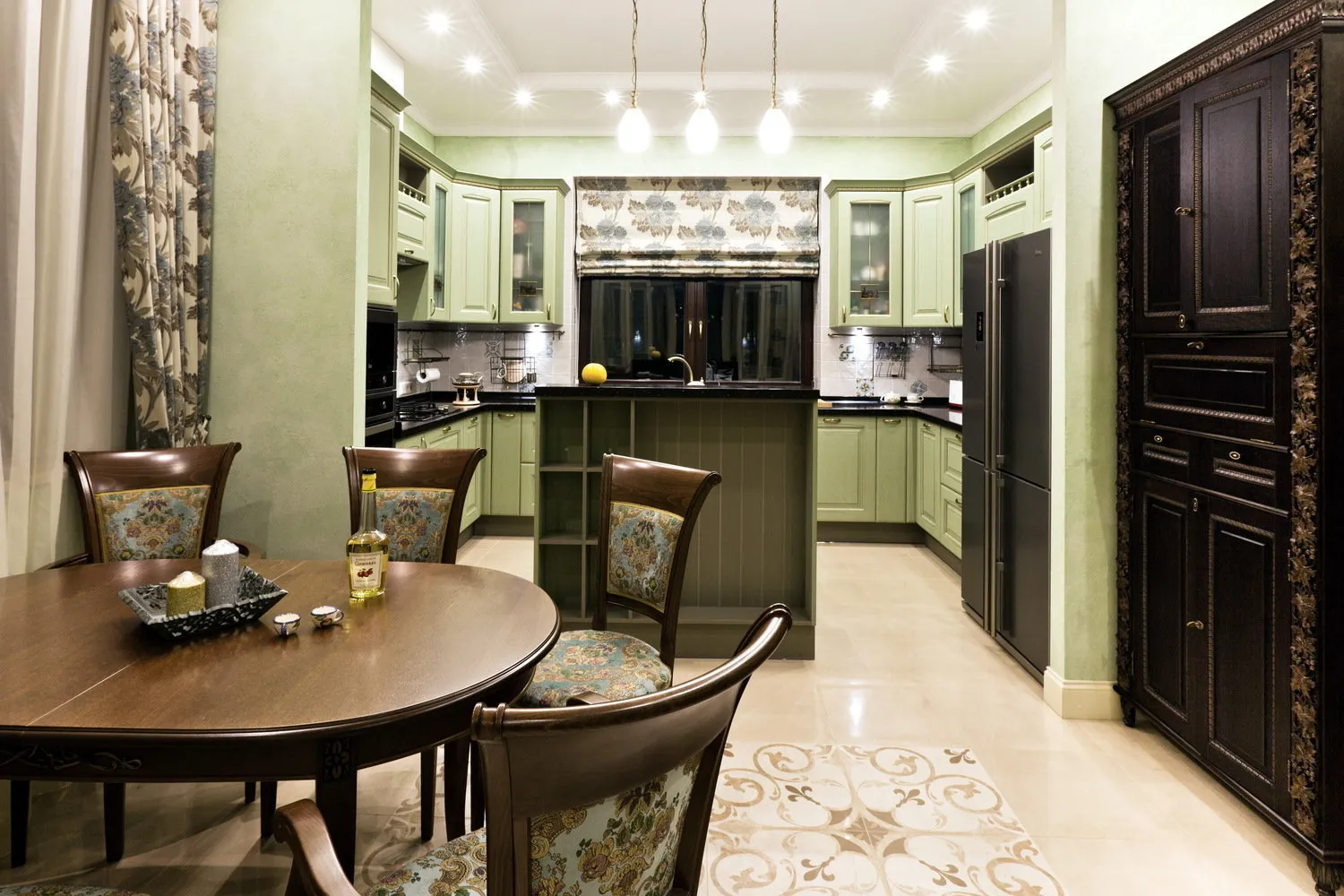
Original Kitchen Ceiling Design Ideas
Unconventional design is primarily related to modern technologies. It is these that help make a kitchen ceiling unusual and beautiful. Here are some things to note:
- 3D effect: using special photo images;
- using stained glass;
- using neon and LED lighting.
Combining these technologies in ceiling installation gives a stunning effect: the kitchen looks like some unreal room emerging from another dimension. These solutions fit well with modern styles such as modern, high-tech or minimalism.
When installing a kitchen ceiling, you must consider the overall design of the room and your own financial capabilities. The last advice is important when choosing finishing materials. It's also crucial to approach installation carefully: only professionally done work guarantees a durable and stylish kitchen ceiling.
Design options for kitchen ceilings.


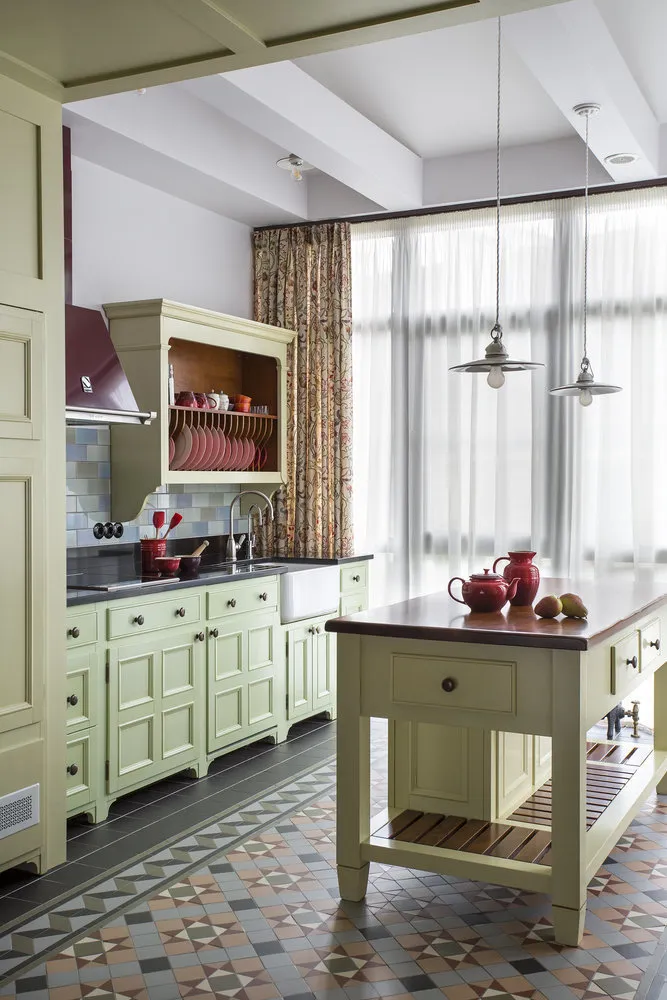


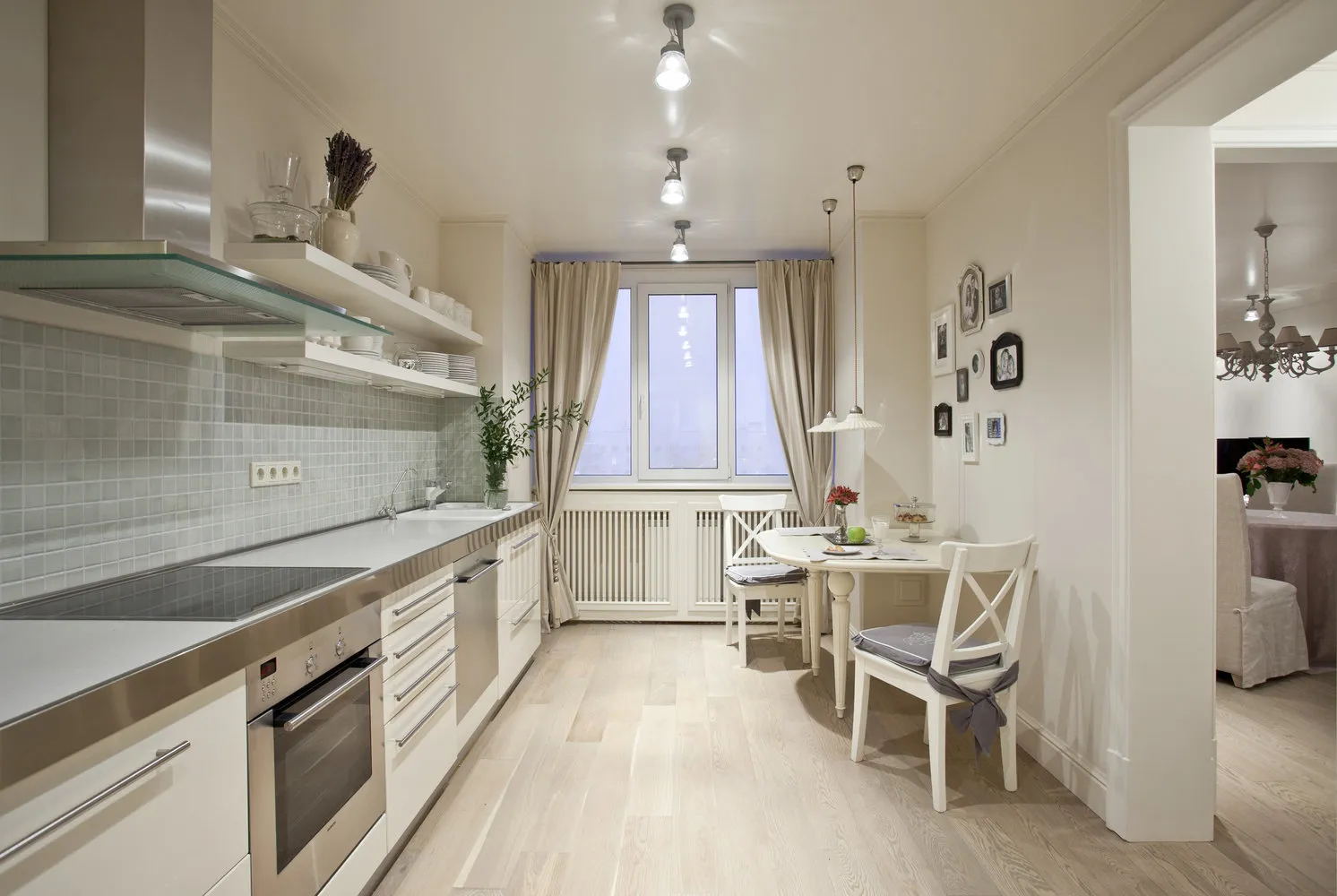
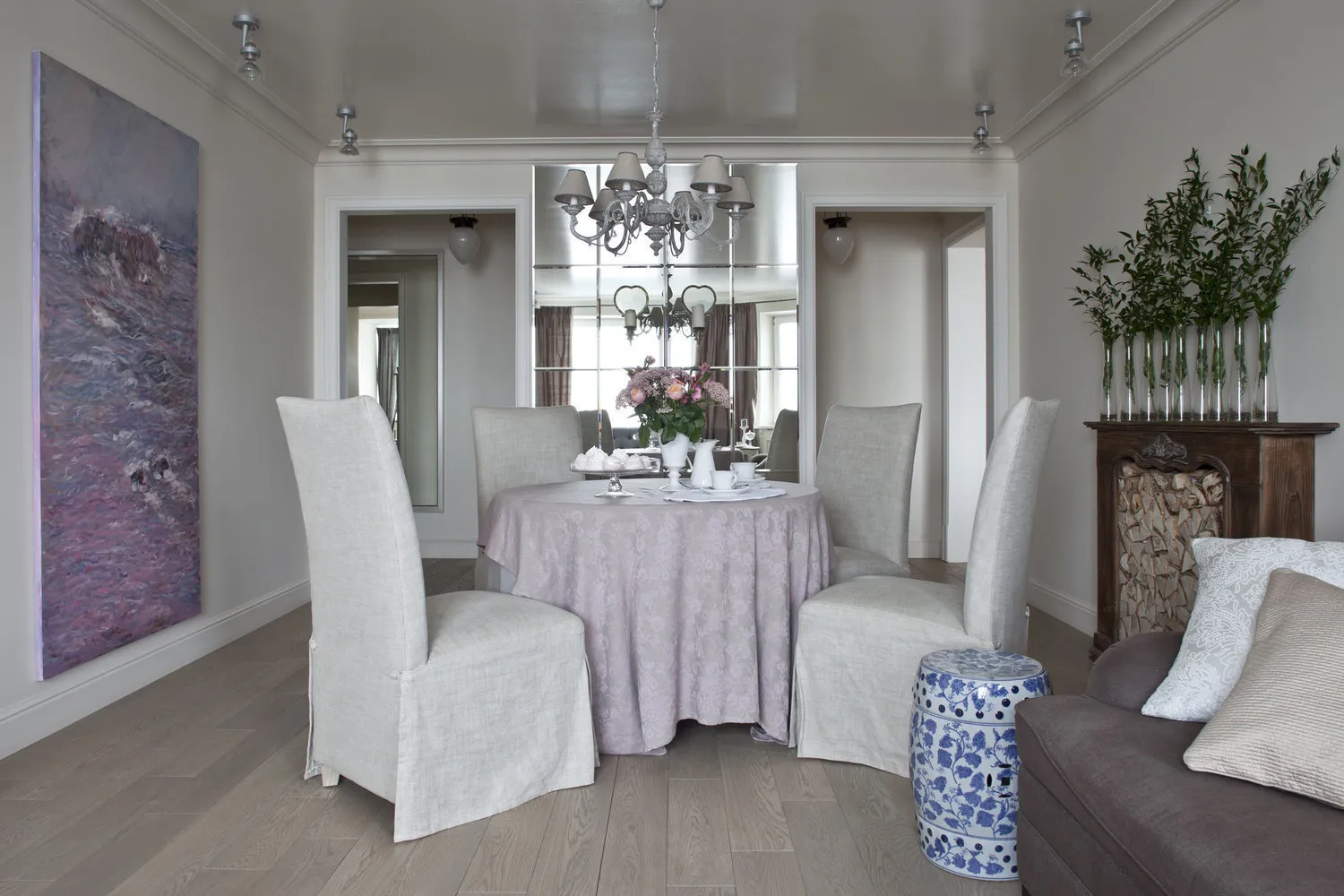
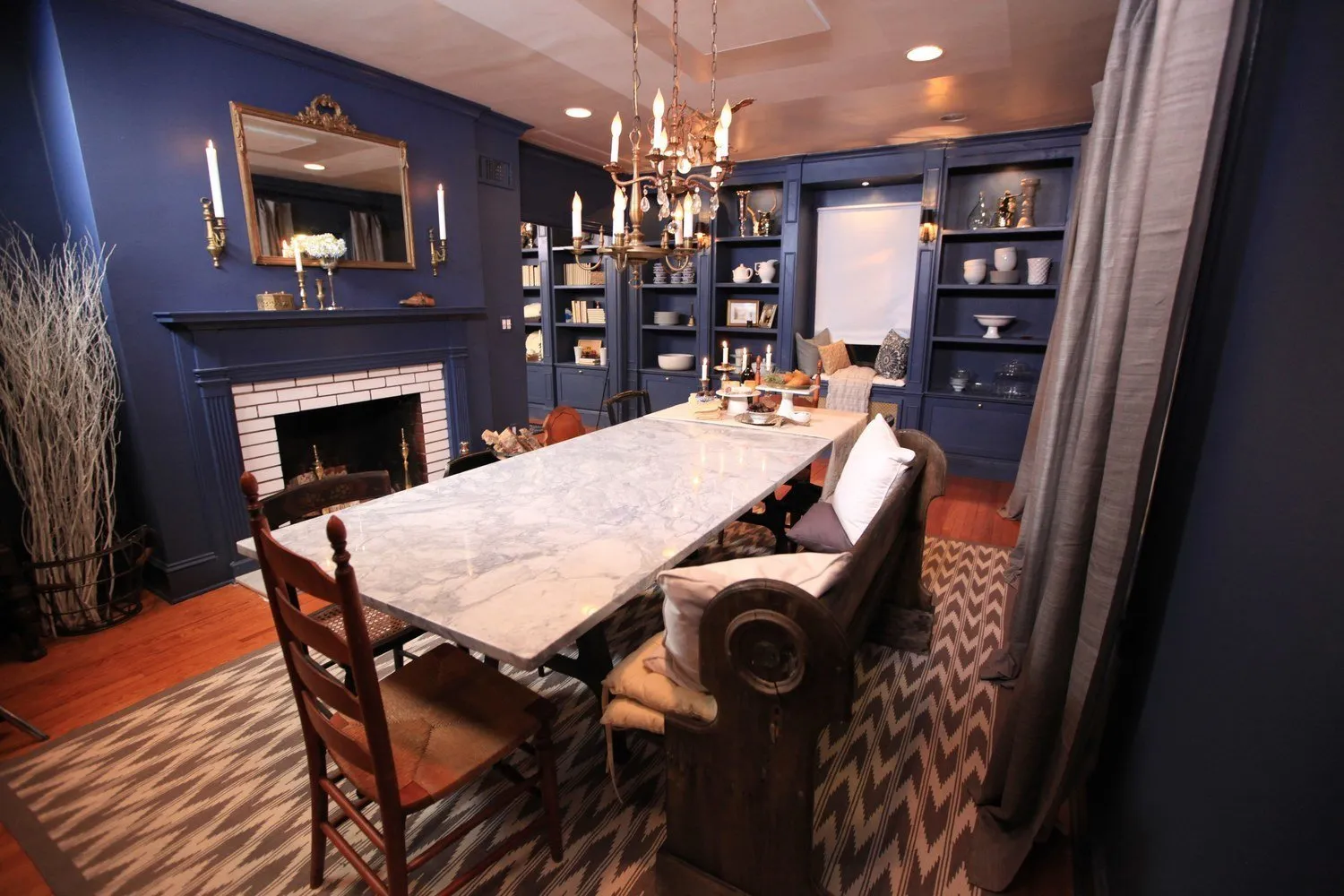

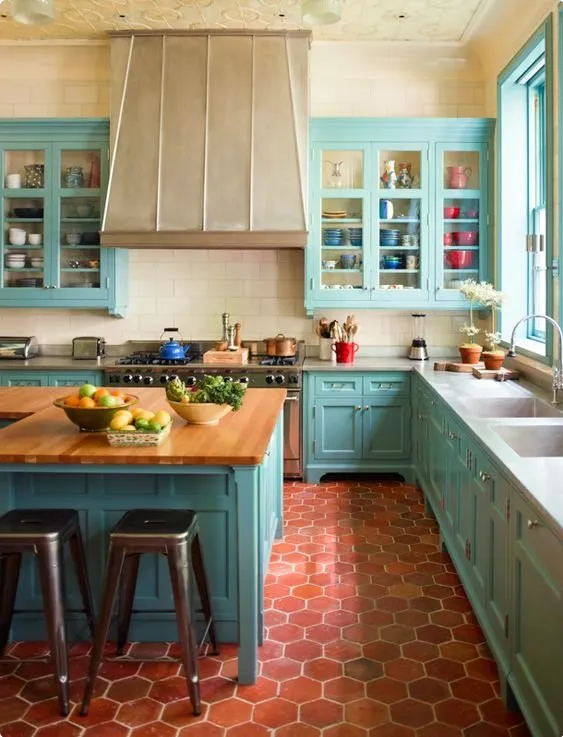

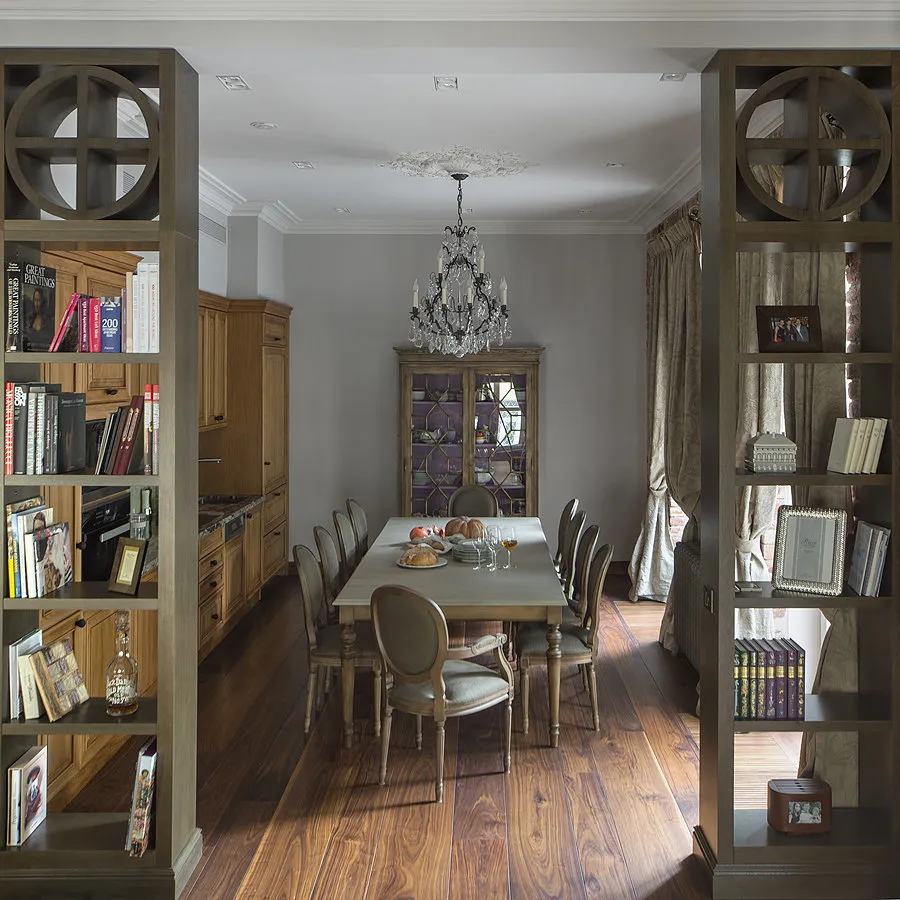


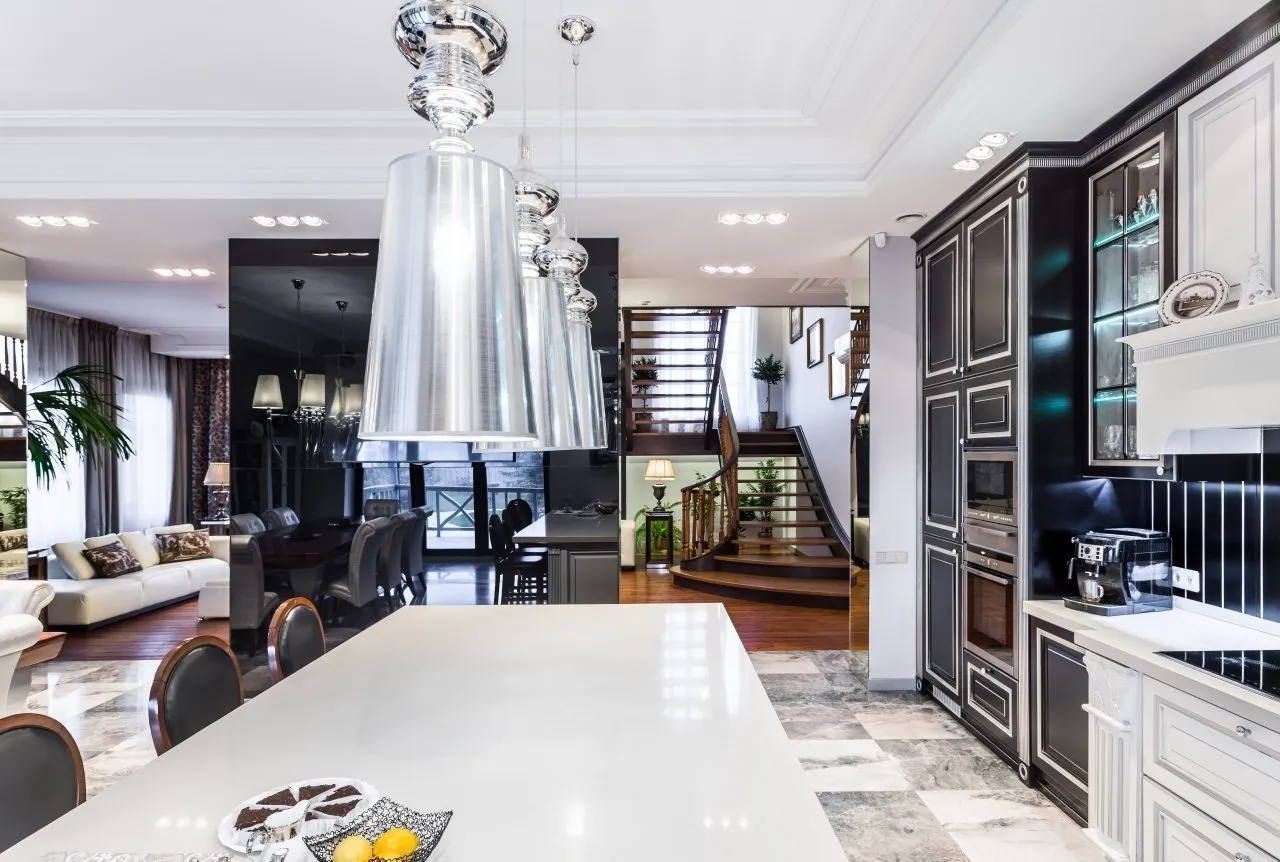
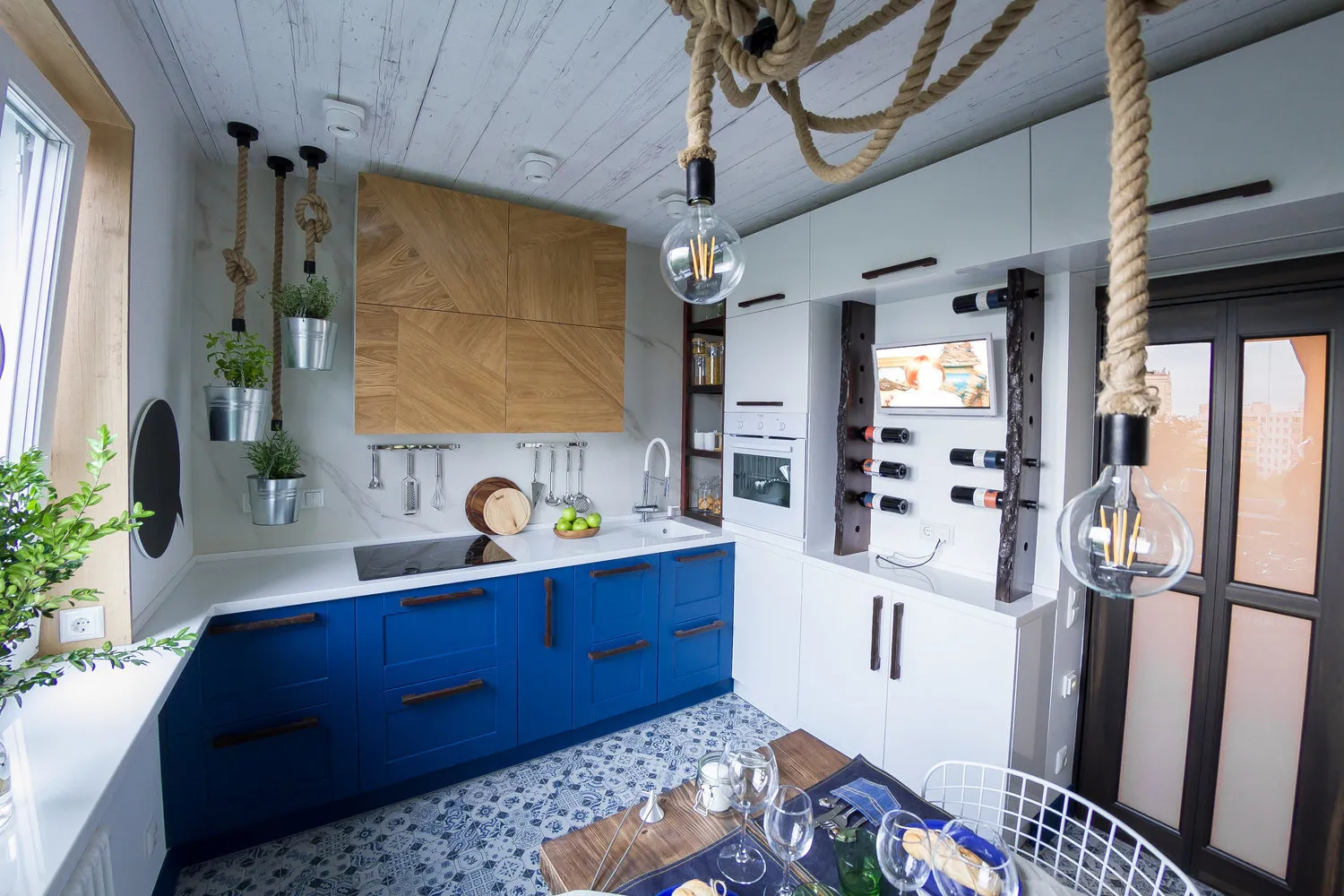

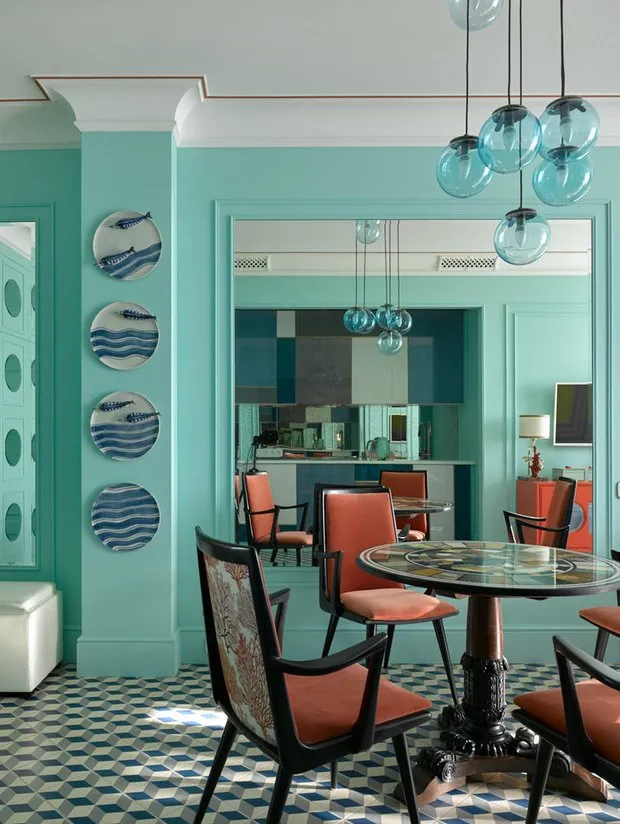
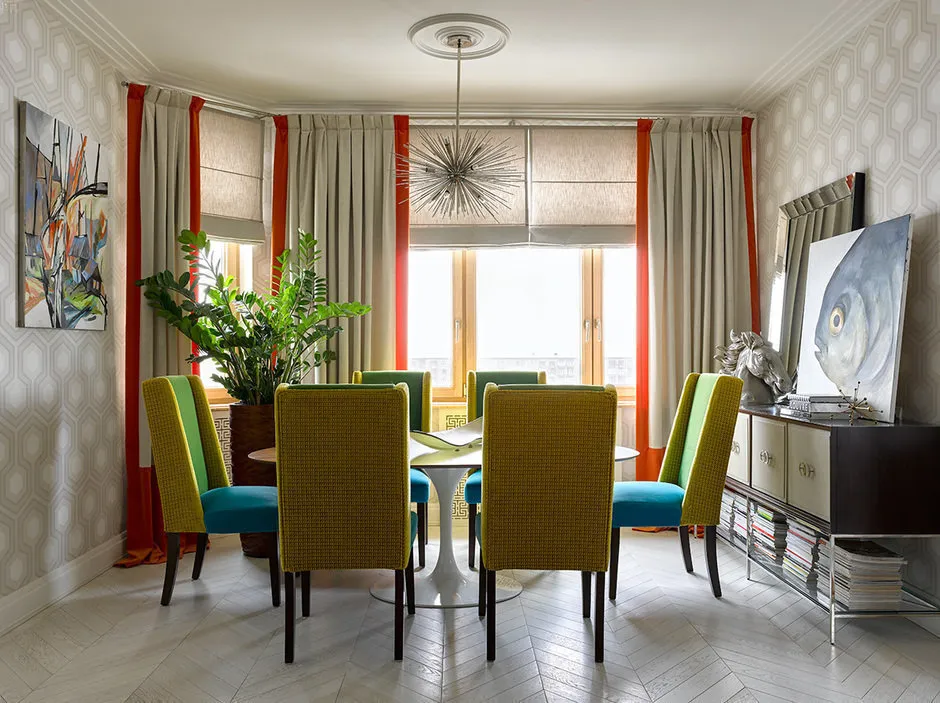
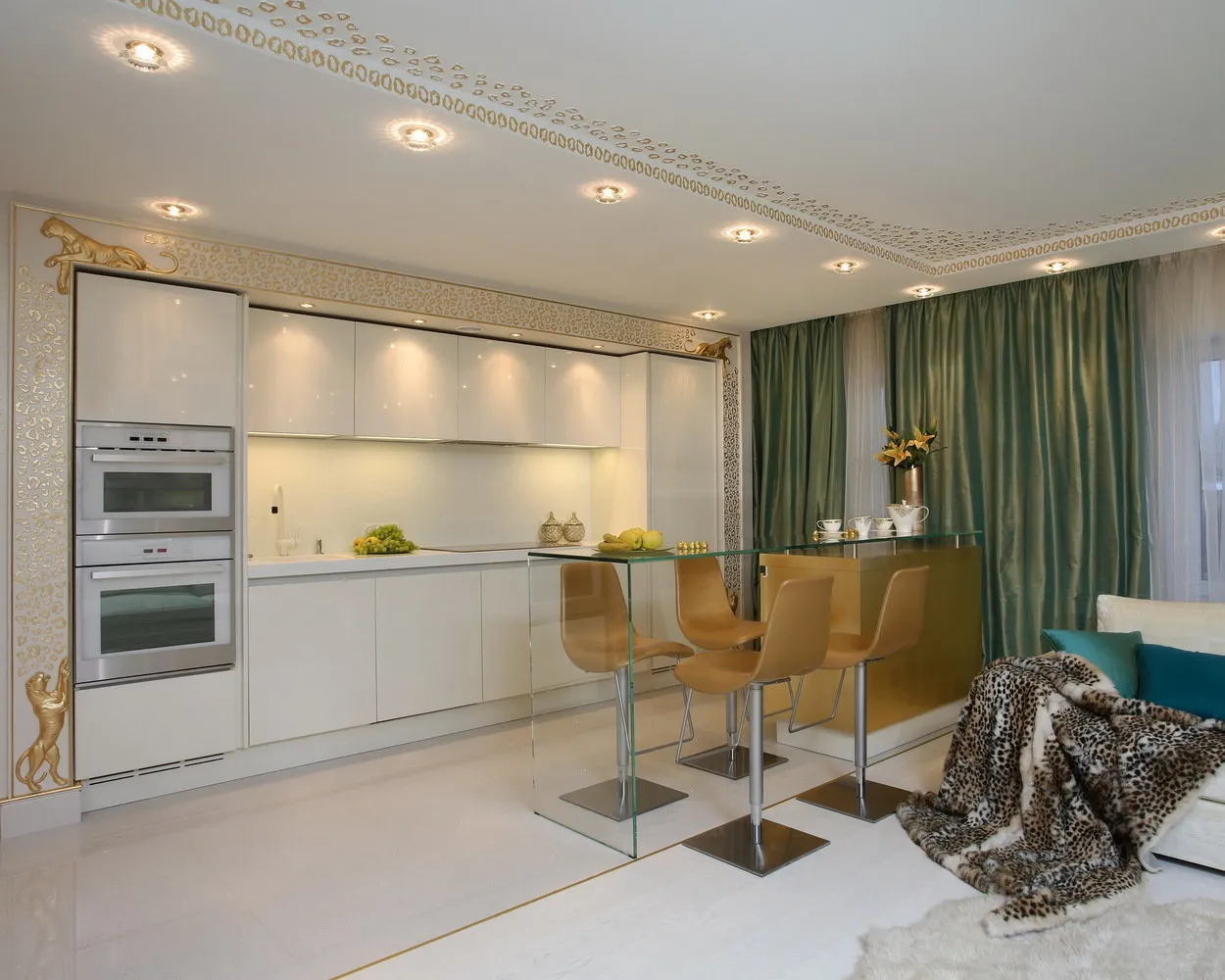

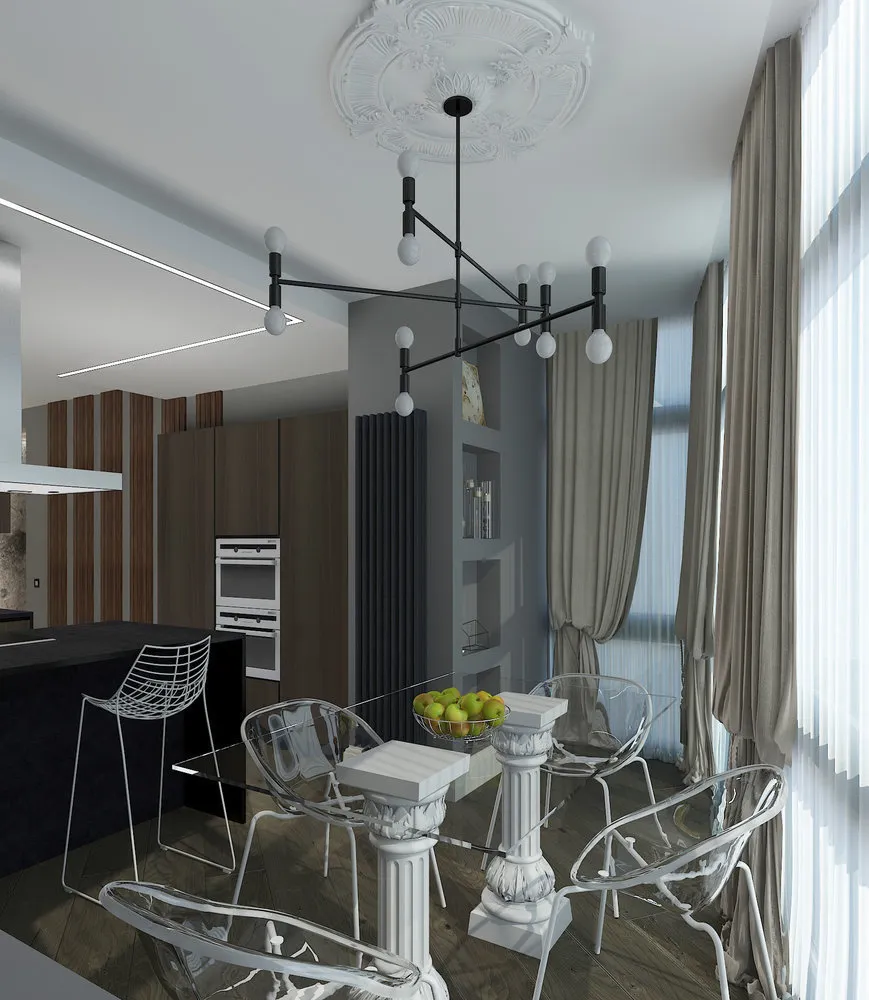
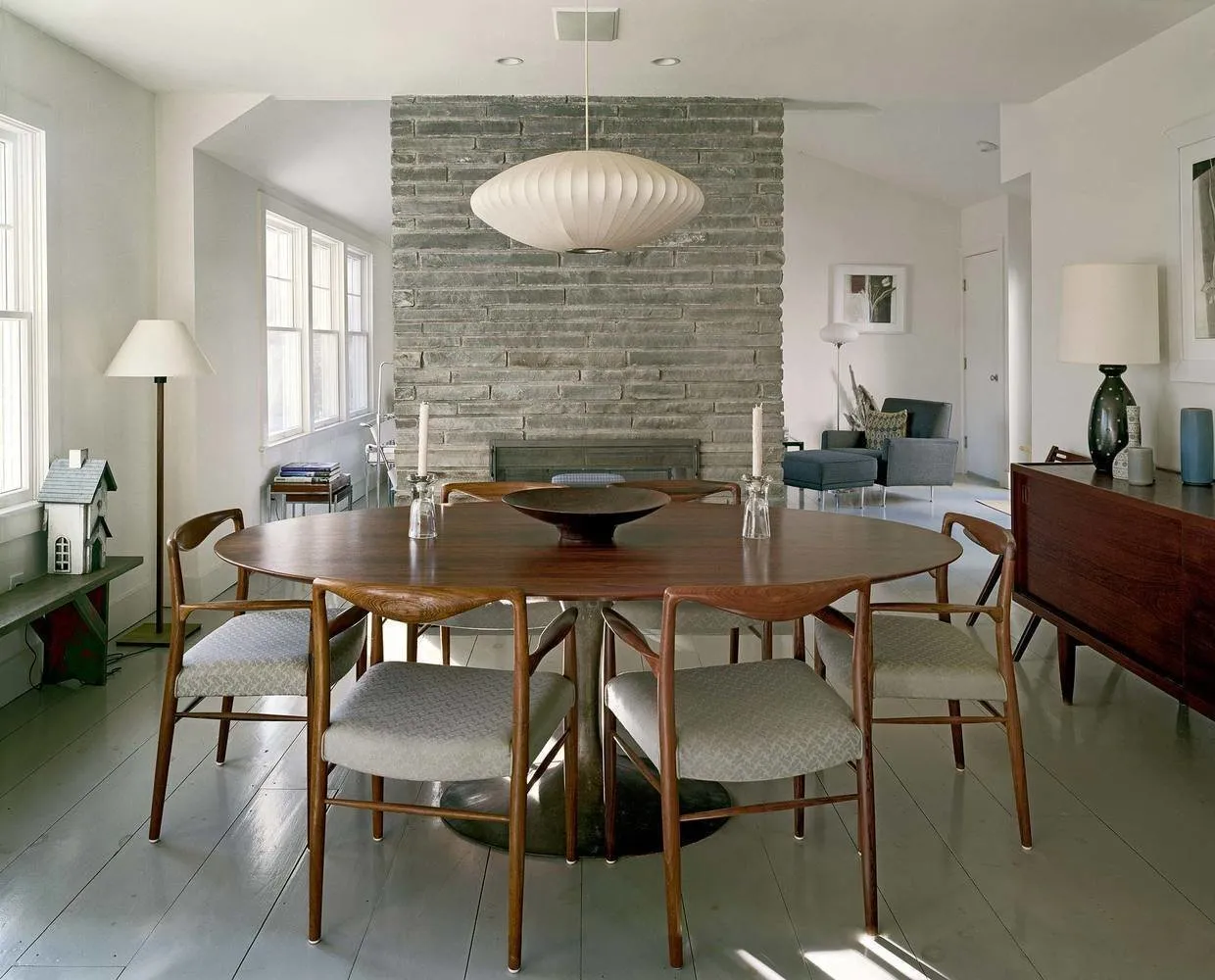
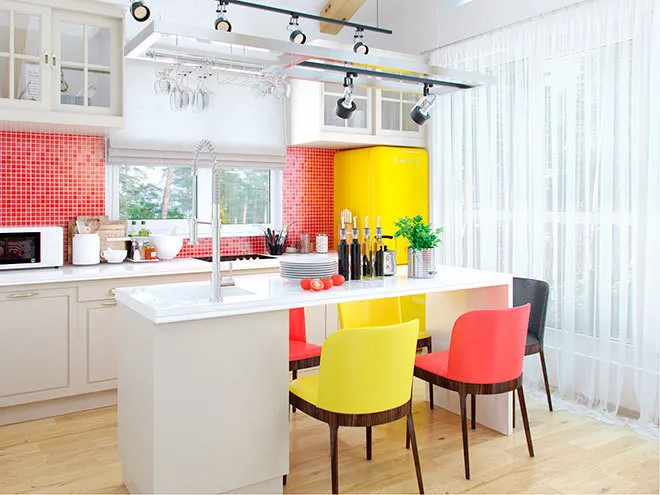
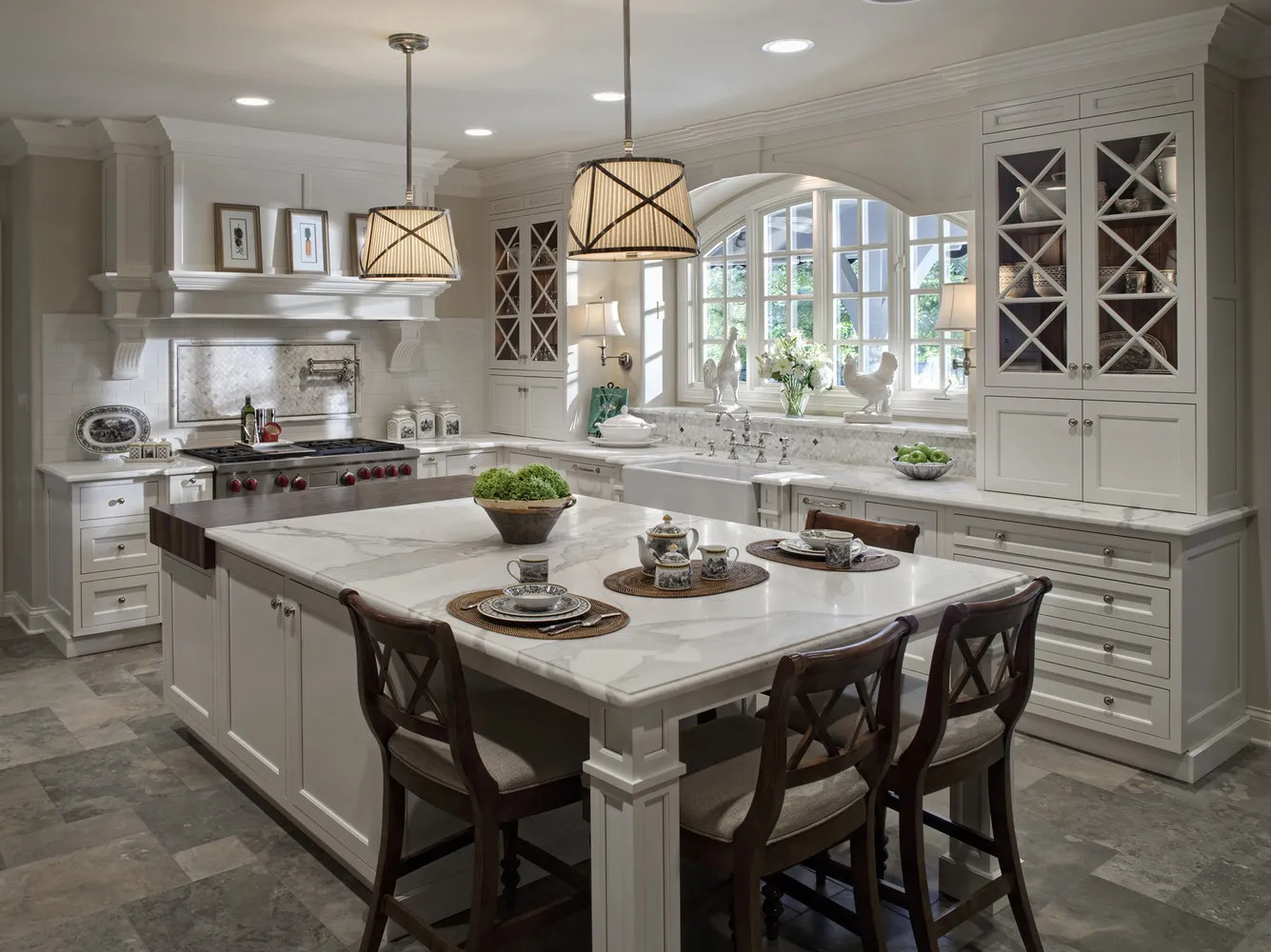

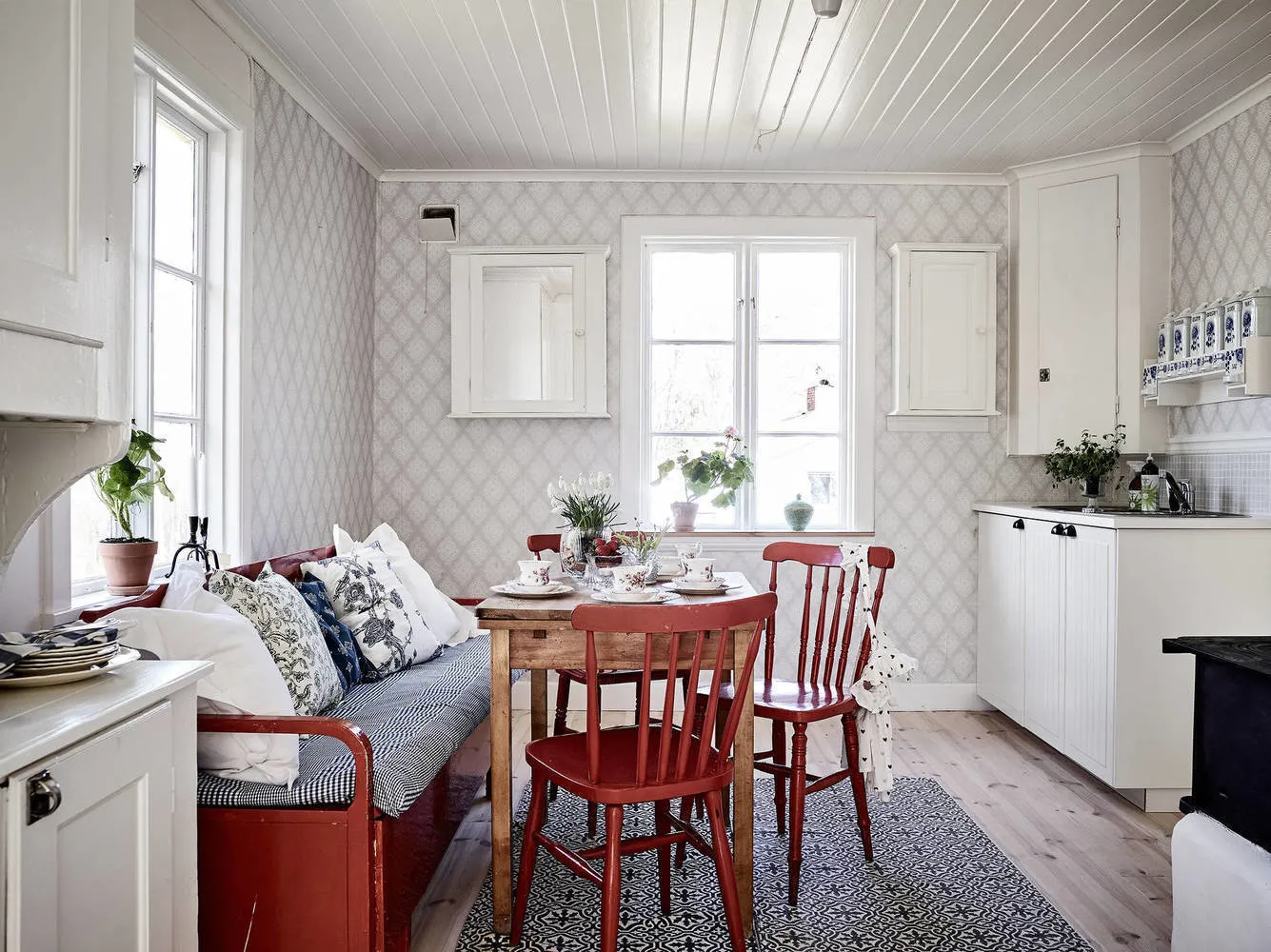
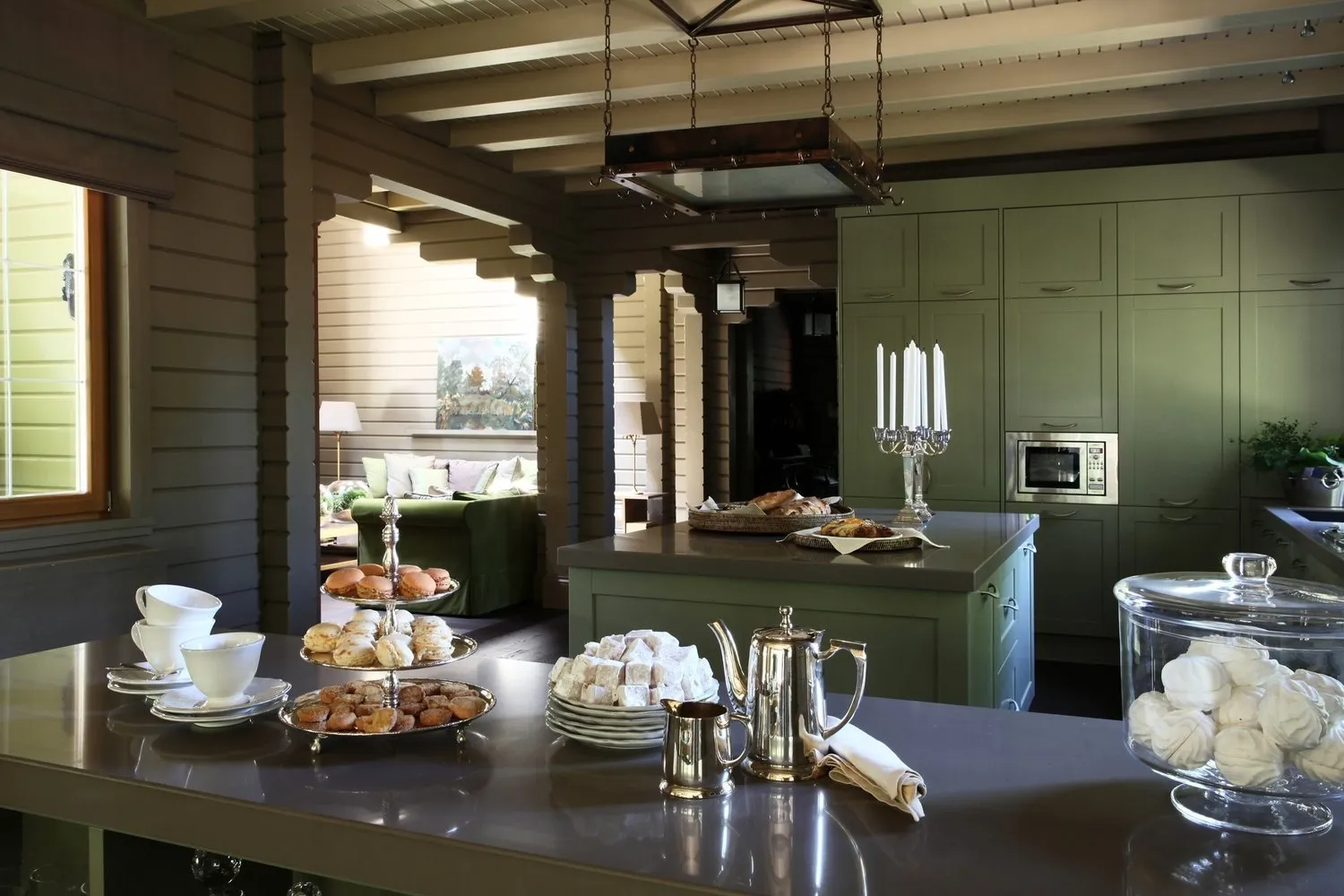


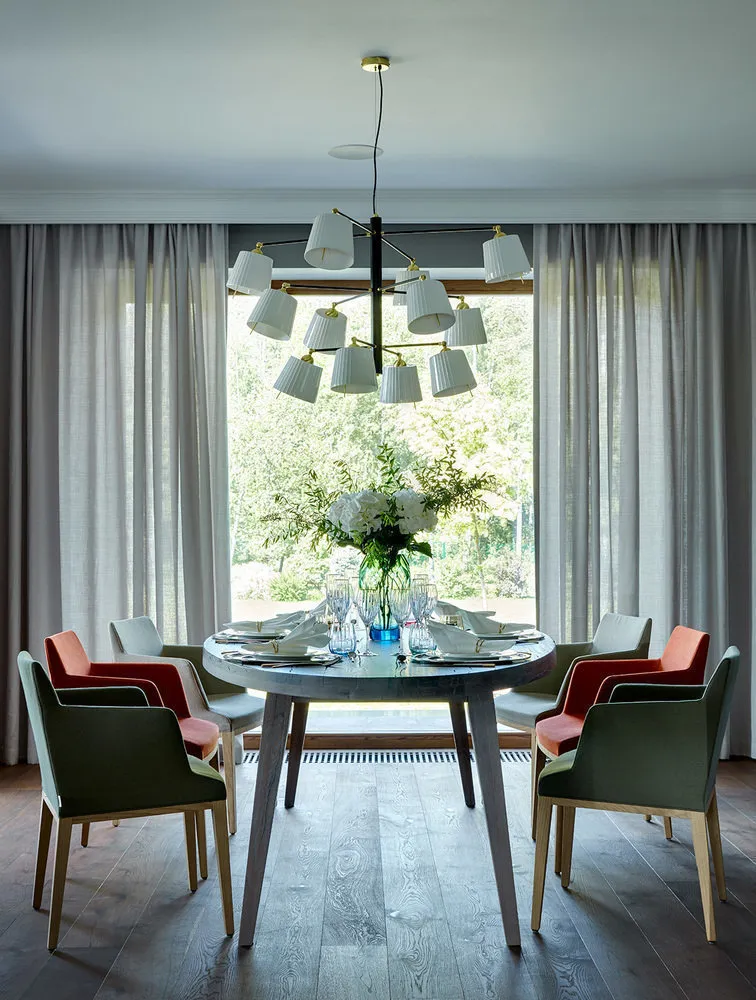


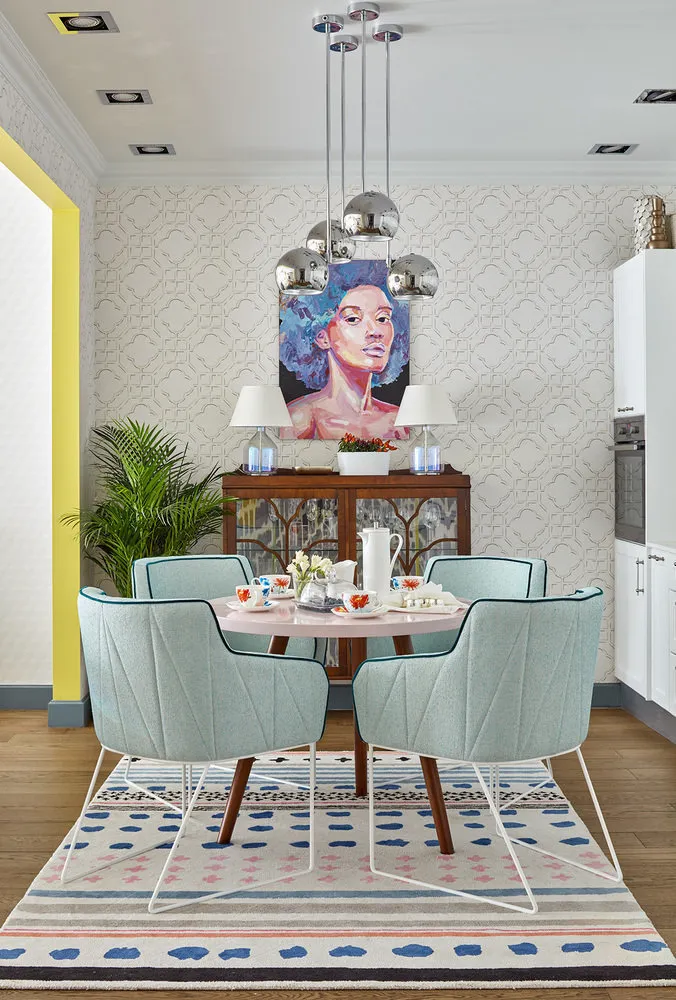
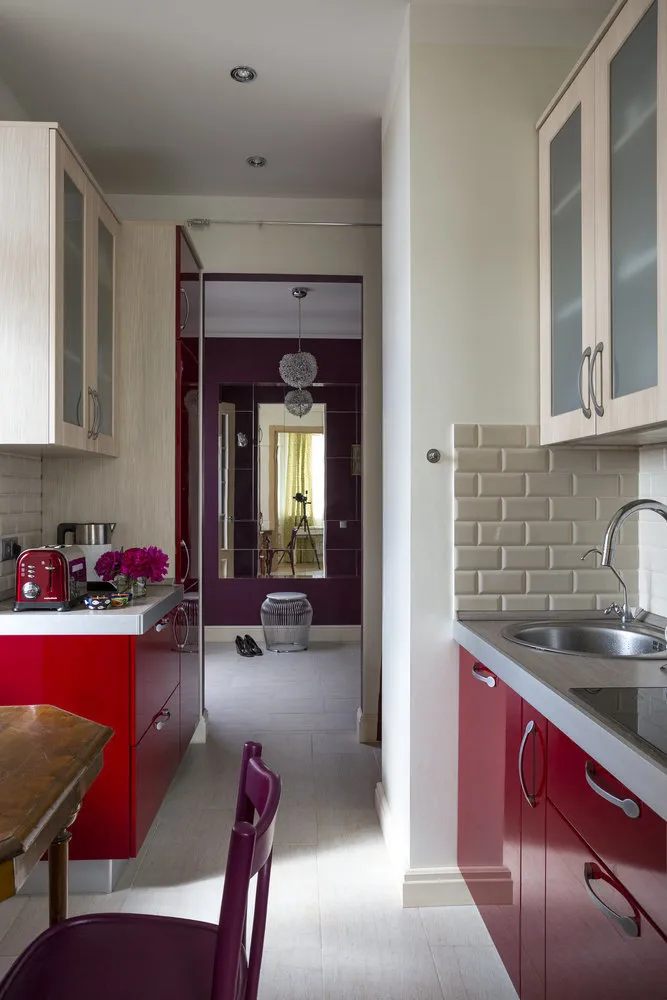
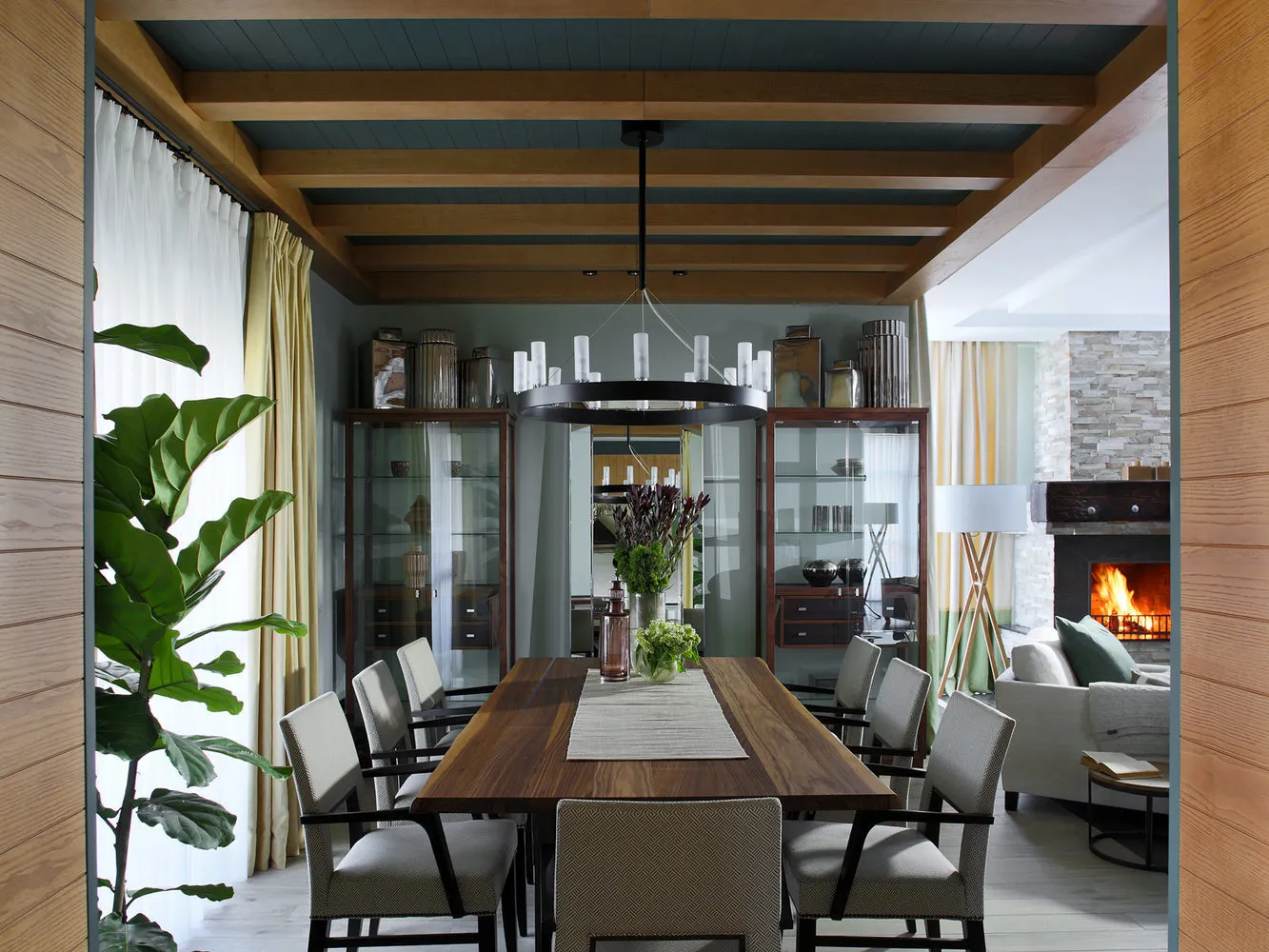
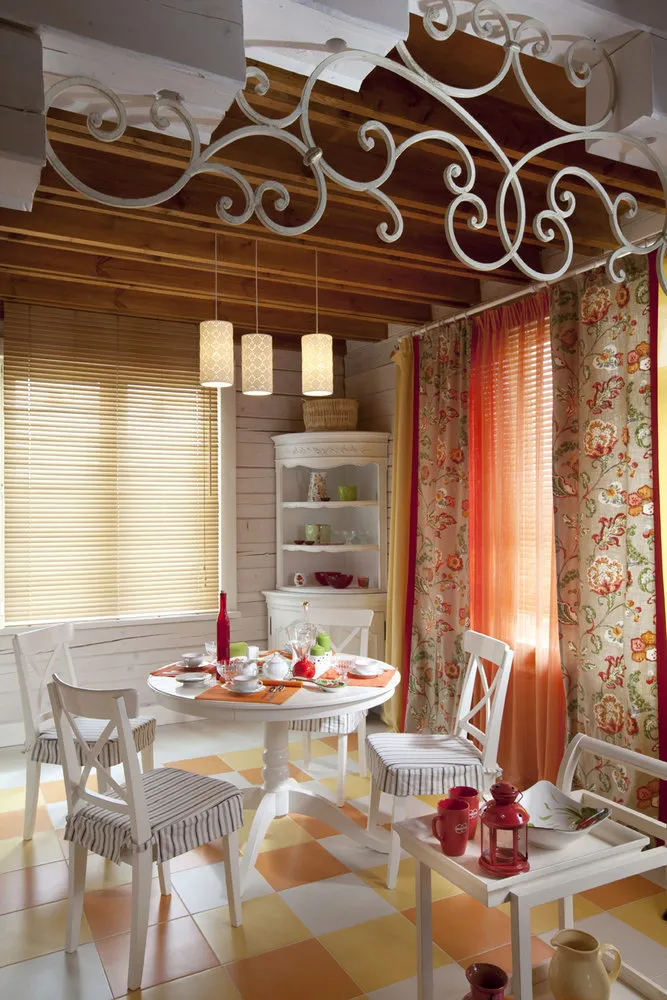
Video: Interesting Ideas for Kitchen Decoration
The cover design project by Irina Derbenyeva.
